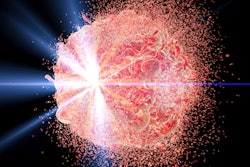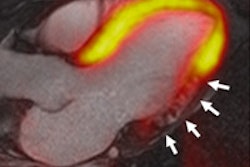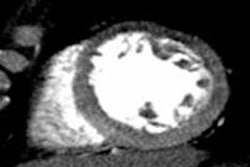Cardiac PET/MR can accurately detect coronary artery disease (CAD) and offers a number of advantages over conventional stress testing methods such as SPECT, according to research presented at the Society of Nuclear Medicine and Molecular Imaging (SNMMI) meeting.
In a study involving 10 patients with reversible ischemia as indicated by SPECT myocardial perfusion imaging (MPI), a team led by Dr. Jeffrey Lau, PhD, from Washington University in St. Louis found that PET/MR had 100% sensitivity, 80% specificity, and 100% negative predictive value. The numbers compared favorably to SPECT in this study group, the team reported.
Patients were administered a nitrogen-13 (N-13) ammonia radionuclide PET agent, a gadolinium MR contrast agent, and the Regadenoson pharmaceutical to imitate the stress of exercise. The researchers said they optimized the cardiac PET/MR imaging protocol to register areas of reduced blood perfusion using MR with PET data about myocardial blood flow.
The combination of anatomic and functional information allows for predicting or ruling out CAD with more certainty and, in some instances, enables detection of disease processes such as hibernating heart muscle that would not have been detected using conventional stress testing methods, Lau said in a statement.
Furthermore, cardiac perfusion PET/MR can be performed in a shorter timeframe than SPECT and is associated with a lower radiation dose per procedure, according to the researchers. MR can also be used to produce an almost cinematic, multiple-frame sequence of the motion in specific heart muscle regions, most notably the left ventricle, while PET provides quantitative data about blood flow in addition to the visual interpretation of disease, they said.
The study was conducted in conjunction with Siemens Healthcare and funded in part by Astellas Pharma.




















